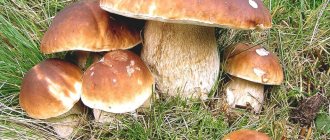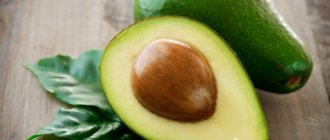Beans are one of the basic products that are used to prepare first and second courses, sauces; they can be canned and stored dry. The number of years it can last depends on the conditions in which it is kept. The shelf life of dry beans can be longer than the 2 years recommended by the manufacturer if they are kept in accordance with the rules. Canned beans have a shorter shelf life and should not be eaten after the expiration date indicated on the package. However, it is not recommended to store beans at home for a long time if they have already been cooked.
How long do bean seeds remain viable?
The maximum shelf life of beans is about 6 years. But the longer the product sits, the lower the likelihood that it will be used for planting. The optimal period is considered to be from 2 to 4 years.
The shelf life of each bean variety can vary significantly. Exact information about how long the seeds remain viable is indicated on the packaging with the seed according to GOST.
The shelf life date is only valid if the seeds are kept in a hermetically sealed container.
The shelf life is indicated on the packaging
How long do green beans last in the refrigerator?
There are several ways to extend the shelf life of green beans.
.
If you store
green
beans in the refrigerator
, they will stay fresh for 3-4 days. In sealed packaging, it can retain its beneficial and tasteful properties for up to 7 days.
Interesting materials:
What is the maximum fine for a legal entity for violating the procedure for carrying out legal proceedings? What is the minimum fine for speeding? What's a fine without a seat belt? What is the fine for not having car insurance? What is the fine for a novice driver without a sign? What is the fine for speeding? What fine must the owner of the 195 car pay? What is the fine if you don't have a mask? What is the fine if you drive without a category? What is the fine if the lights are not on?
Conditions necessary for storing beans, terms
The quality of seeds can only be preserved by storing them correctly, providing the product with the necessary conditions for it:
- Containers - glass or metal containers, fabric bags or cardboard boxes. It is recommended to select small containers, laying out the product in portions.
- Temperature - should not be higher than +10 °C, the ideal indicator should be at around +5 °C.
- Humidity level - no more than 50%. If the humidity is high, there is a high risk of mold.
Under such conditions, the dried product will last for about 2 years without losing its qualities.
Attention! If the seeds will be kept in fabric bags, it is recommended to hang them to ensure adequate ventilation.
White and red beans: benefits and harm to the body
If we talked about the nutritional and beneficial properties above in sufficient detail, then the dangers of the product should also be mentioned. Some people should take into account that this legume cannot be consumed by everyone. It should be eaten with caution by people suffering from the following diseases:
Do you always follow the correct storage of food/medicines and their product proximity?
Yes, of course, this is very important so as not to spend money on your health later.
44.44%
Not really, because there won’t be anything like going to the toilet.
25.36%
I look at it by appearance and if I use anything after heat treatment.
30.2%
Voted: 351
- high acidity or gastritis;
- ulcers or cholecystitis, as well as gout and colitis;
- people with a tendency to flatulence.
Keep in mind that red beans, the benefits and harms of which (especially the last harm) differ from the same characteristics of other types of beans, cause gas formation to a lesser extent. But you still need to prepare it with caution and especially carefully. Please note that any beans are always soaked for at least several hours before cooking. Some housewives recommend adding a pinch of soda to the water - this way the beans will cook faster and become soft. Also, to reduce gas formation, it is recommended to add various spices, for example dill, to the boiled porridge.
Seed storage location
To store seeds in winter, it is recommended to choose the following places:
- balcony or loggia;
- cellar;
- basement.
If it is not possible to keep the seeds in a cellar or basement, a loggia or balcony will do. But in such places it is recommended to keep the product in boxes with low sides, and keep them as close as possible to the balcony door.
Attention! Regardless of where you choose to store your beans, keeping it clean will help reduce the likelihood of pests.
Another option for storing vegetables is using vacuum bags.
What beneficial substances do beans contain?
Considering the chemical composition, we can highlight the following components of beans, the benefits of which for the body are undoubted. So, it contains:
- vitamins A, group B, in particular B1, B2 and B6, K, PP and vitamin C;
- In addition, it contains a useful and necessary antioxidant for all of us - vitamin E;
- Beans also contain large quantities of minerals - iron, calcium, phosphorus, magnesium, sodium, iodine, zinc;
- necessary acids - Omega-3, lysine, arginine and others.
In addition, beans contain a lot of fiber, which is necessary for proper digestion.
Selecting a storage mode
Before storing beans, you need to choose the best option for this. There are several of them, and each has both advantages and disadvantages:
- Correct temperature conditions for storing raw seeds. The beans are laid out in the selected container - in bags, jars, boxes, and placed in a cool, clean room with a temperature of no more than +5...+10 °C.
- Thermal mode - before the red beans are placed in containers, they must be calcined in the oven, gas or electric, at a temperature of 90 ° C for 5 minutes. The grains are poured into a glass container only after they have cooled completely. It is recommended to put a couple of garlic cloves on the bottom, then the vegetable will last for several years without any changes.
- Freezing - this mode involves placing the legumes in the freezer. It is recommended to place the beans in portions in bags and put them in the freezer, but first they must be rinsed and dried well. The advantage of the method is that the risk of insects is eliminated.
- Preservation - there are many recipes for preparing vegetables this way. The harvested beans can later be used to prepare various dishes - stews, borscht, salads.
After preservation, the vegetable does not lose its beneficial properties and taste.
The easiest way to prepare beans: soak 450 g of beans in water for 6 hours. Drain the water, put the grains in a saucepan and add 1 liter of water. Add 40 g of sugar and salt. Other spices are added to taste - pepper, cloves. You need to choose them based on how the boiled product will be used in the future.
White and red beans: health benefits
According to some scientists, red beans are the richest in antioxidants, that is, substances that prevent aging, protect the cardiovascular system from various problems, and help in the prevention of cancer. Considering that beans, not only red beans, but any other, contain about 20% vegetable protein, with only 2% fat and 58% carbohydrates, they can be considered as an alternative source of protein, especially for those who follow a vegetarian diet . Many components of this product help maintain the beauty of skin, hair and nails. It also reduces the level of “bad” cholesterol in the blood. Plus, these beans are simply delicious when used in side dishes, salads, and other dishes. They are a very filling product without being overly high in calories. Here they are - white or red beans, their benefits for the body are comparable to products such as currants or cranberries. Be sure to include this very inexpensive and accessible product in your diet.
Seed storage methods
How long dry beans are stored depends on the chosen method of keeping them. There are two of them - open and closed. Regardless of which storage method is chosen, a number of recommendations must be followed regarding the preparation of legumes and their further maintenance:
- Grains with a white coating cannot be stored; they must be selected from the total mass.
- Vegetables in pods should not be stored for more than a few days, as the grains will begin to dry out quickly, which will lead to the beginning of the pod rotting.
- Before putting the beans into containers, do not wash them.
- Dry grains are subject to storage, without signs of any damage.
- Before putting the beans into containers, they need to be sorted - damaged or dried grains are discarded.
Additional Information! To ensure that the prepared product lasts for several years and does not deteriorate, it is recommended to subject it to heat treatment, for example, in the oven. Then all excess moisture will be released from the grains, which will prevent them from rotting.
Culling legumes is a mandatory stage of preparation for storage
Open way
The open method involves storing beans in containers that allow moisture and air to pass through. Such containers include bags made of jute or linen material. These bags are sewn in 1 or 2 layers.
Closed method
The closed method of storing grains is less common. It involves keeping the seeds in a container that does not allow moisture and air to pass through. The container should be soft and consist of two layers - the inner one is polyethylene, the outer one is fabric. Inside such containers the humidity level will be from 6% to 9%.
The inner polyethylene layer must be tightly closed to prevent moisture from entering, and the outer, fabric layer can be tightened with side ropes.
For closed storage, you can purchase special bags
How to Preserve Green Beans for the Winter
Green beans are very tasty and aromatic. To keep it fresh, just place it in the freezer. Freshly picked pods are first washed under running water. Then the stalks and damaged areas are cut off. Beans that are too long need to be cut into pieces. To freeze fresh green beans for the winter, do the following:
- Blanch the green beans by immersing them in boiling water for 3-4 minutes. The product is then placed in ice water to preserve nutritional quality.
- Place the pods on a paper towel to drain all the water. Otherwise, an ice crust will form on the grains, which will deprive them of their special aroma.
- Dried beans are placed in plastic bags. The portion is calculated so that it can be completely consumed, because... re-freezing is not advisable. The bags are tied tightly and sent to the freezer.
How to protect seeds from pests
The appearance of insect pests in beans during long-term storage is a common problem, and if you do not protect the beans from various bugs, they will be severely damaged and become unusable. Simple tips will help prevent insects from appearing:
- If the beans are in cloth bags, it is recommended to place a few garlic cloves in them. Garlic secretes enzymes that repel all insects.
- Beans can be stored in the refrigerator, where there is no chance of insects. But you can keep the legume crop there until cold weather sets in outside, then you need to move it to a cool place - a balcony in an apartment is suitable for this.
- When storing in glass containers, you need to pour a small amount of wood ash on the bottom - for 0.5 container volume you will need from 10 to 20 g of product. The container itself should only be closed with a metal lid.
Additional Information! One of the easiest ways to protect beans from insects in your home is to use printing inks. If you need to store beans in large quantities, use spacious boxes or cardboard boxes with newspapers laid out in several layers at the bottom.
Without taking measures, it will not be possible to protect the workpieces from pests; they will be destroyed
Where and in what to store beans
After harvesting and drying, the beans are stored in an airtight container: a glass jar with a lid, a plastic bag or a plastic container. You can also store supplies in a canvas bag. It must first be soaked in a saline solution and dried without rinsing. This impregnation will protect the crop from harmful insects. It is better to keep linen bags with grains in a dark, cool place: in a closet, basement or pantry. But an airtight container with grains can be stored even at room temperature by placing it in a kitchen cabinet. The main condition is to stay away from heat sources.
Important!
Jars must be sealed with metal or glass lids, because... plastic ones allow air to pass through. However, you need to remember that in an airtight container the seeds lose their viability.
Warm and moist air promotes bean germination. Therefore, food supplies should be placed in a dark, cool place. The grains tolerate low temperatures well and do not lose their nutritional qualities. To prevent beans from getting bugs, you need to store them in the refrigerator until winter. When frost sets in, the container with grains should be moved to an insulated balcony. Beans left for the winter can be stored in the utility room, having gotten rid of rodents in advance.
Symptoms of bean intoxication
Symptoms of bean poisoning appear an hour after consuming a low-quality product. This is a non-microbial intoxication, so the patient does not develop a fever. How does poisoning manifest itself? Signs:
- nausea, urge to vomit;
- intense diarrhea;
- painful sensations in the abdomen in the navel area;
- flatulence, severe belching;
- weakness, apathy;
- headaches;
- severe thirst, dry mouth;
- rapid pulse;
- low pressure;
- decreased frequency of urine output.
Signs develop gradually. With severe diarrhea and vomiting, dehydration may occur, which is dangerous for humans.
First aid and treatment for poisoning
If signs of poisoning are detected, it is recommended to call a team of doctors. The victim is given first aid, which includes simple actions:
- Gastric lavage is carried out, it is allowed to use water or a weak solution of potassium permanganate.
- After the procedure, the victim is given sorbents to drink - activated carbon, Polysorb.
- It is allowed to use a saline laxative - magnesium sulfate.
- To prevent dehydration, the patient is given plenty of fluids to drink - water, medicinal solutions (Regidron, Hydrovit), herbal infusions.
- It is possible to reduce pain in the abdomen with the help of the drug No-Shpa.
For mild poisoning, first aid is usually sufficient. Unpleasant symptoms disappear, weakness and poor appetite persist for two days.
If the poisoning is severe, the victim will require hospitalization. In a medical institution, diagnostics are carried out and suitable treatment is selected:
- gastric lavage using a tube;
- use of siphon enemas;
- administration of saline, glucose and other medications;
- symptomatic treatment using drugs to restore the functioning of the cardiac, digestive and other systems.
The victim is prescribed bed rest, plenty of fluids and rest until complete recovery. Compliance with dietary nutrition is important. Vitamin complexes, medications aimed at restoring the liver, and probiotics are prescribed.
Canned beans
This preparation is an excellent way to preserve the bean harvest for the winter. Canned food prepared according to all the rules is stored for two years.
Ingredients:
- 0.5 kg beans;
- 1 liter of cold water;
- 40 g granulated sugar;
- 40 g salt;
- 7 tsp. table vinegar;
- cloves to taste;
- black peppercorns to taste;
- cold water for soaking.
How to cook:
The beans are soaked for 7 hours in cold water. Then the liquid is drained and the beans are transferred to a clean pan. Add cold water according to the recipe, add sugar, salt and spices.
Bring the contents of the container to a boil over low heat and boil for 1.5 hours. Periodically check the readiness of the beans with the tip of a knife. If the beans yield easily to pressure, they are ready.
Add vinegar to the pan and immediately turn off the heat. The finished product is placed in sterilized jars and hermetically sealed with tin lids.
Tips for cooking red beans
While it is very easy to prepare a leguminous vegetable - it can be easily cooked, then the situation with red vegetables is somewhat worse. More precisely, no worse, but more complicated. It needs to be soaked - we have already mentioned this fact, and it is best to soak it overnight. After this, it should be filled with new water, put on the stove and wait until the liquid boils. Immediately after boiling, this water must be drained and then new water must be poured. In this case, the beans will retain more nutrients and simply taste better. You can also add spices and a couple of tablespoons of vegetable oil during the cooking process. In our article we talked in detail about beans; the benefits and harms were also discussed. Agree, the product still has more positive properties, so be sure to include it in your family’s diet.
Most of the plant foods we eat are healthy in one way or another. Today in our article we will look at the benefits and harms of beans, name a group of people who should definitely include them in their diet, and give the chemical composition of the product and other interesting characteristics.
Mechanized methods for harvesting beans and their comparative characteristics
Let's look at the most popular mechanized methods of harvesting beans.
| Means | Advantage | Peculiarities |
| Single row header RCM-11 | Mowing and threshing beans. The cleaned grain is put into bags for storage. There are 2 trays for filling beans into bags. Easy to manage and configure. Simultaneous collection of two rows. | For production or farming |
| FA-4A bean harvesting machine | Possibility to turn the windrows. Cleaning from 4, 8, 12 rows. Threshing the crop. | Does not pick up collected windrows. |
| Combine harvester "Niva" | Equipped with: 1. pick-up; 2. elements of threshing equipment; 3. lifting block. Performs the necessary functions when harvesting beans. | Application for large volumes. |
Use mechanized bean harvesting methods for large plantings.
How to determine product quality
To determine quality, you need to look at the shelf life of the beans. If the period has already expired, the product cannot be stored for long. In this case, there is no point in thinking about how to preserve such beans so that bugs do not infest them.
Quality dry beans look like this:
- the surface is smooth, not rough, without dents;
- the color is bright and uniform, without gray inclusions or brown spots;
- there are no small holes on the surface;
- all beans are approximately the same size.
If the product gives off an unpleasant smell of dampness or mold, the beans are spoiled. If condensation has accumulated in the bag and there are droplets of moisture on the seeds, it is recommended to remove the beans from the container and dry them again on newspaper until completely dry.
To successfully combat insect pests, you need to comply with the storage conditions of products, and also periodically inspect the cabinet where legumes and cereals are stored. If there are any signs of a bug, you should get rid of the affected beans and take measures to prevent the spread of pests.
To ensure that beans can be stored for as long as possible, it is necessary to organize their proper storage. The product may harbor bugs and other pests, it may be affected by mold and infections. Therefore, it is important to create optimal conditions, not only for dry beans, but also for frozen and canned ones. The very first condition to preserve beans for the winter is dryness. High humidity is a favorable environment for harmful microorganisms.
Prevention and consequences
Poisoning caused by beans in most cases does not lead to serious consequences. Treatment is often carried out at home, because severe poisoning requires consuming a large amount of the product. Prevention consists of following safety measures:
- Always soak beans before cooking;
- cook for at least an hour;
- ensure that children do not consume raw products;
- stop eating raw legumes;
- Do not use traditional medicine that contains non-thermally processed products.
Poisoning from raw beans is rare. You must carefully prepare dishes with this product and comply with all conditions. When purchasing canned beans, it is recommended to carefully inspect the packaging and expiration dates.
Selection of containers and creation of optimal conditions
After harvesting, beans should be stored in an airtight container. Suitable for this:
- food grade plastic container;
- plastic bag;
- glass jar.
It is necessary to prevent insects from entering the container. The optimal conditions for storing beans are low air temperature and lack of humidity. If it is impossible to exclude the penetration of grain, it is better to leave containers with beans in the freezer. Then, with the onset of winter, the containers are moved to the balcony.
Humidity and heat promote germination of grains. Therefore, it is impossible to keep beans in such conditions for a long time. Such sprouts are not eaten, but they can be used for planting in the spring. If planting material is stored in a fabric bag, before filling it with beans, it is soaked in a salty solution and dried. This treatment eliminates attacks from weevils and other insects.











